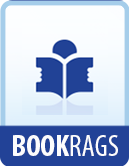But it was a different matter on Friday morning, October 12, 1492,
[This date is reckoned
in the old style. The true astronomical date
would be October 21st,
which is the modern anniversary of the
discovery]
when, all having been made snug on board the Santa Maria, the Admiral of the Ocean Seas put on his armour and his scarlet cloak over it and prepared to go ashore. The boat was lowered and manned by a crew well armed, and Columbus took with him Rodrigo de Escovedo, the secretary to the expedition, and Rodrigo Sanchez his overseer; they also took on board Martin Alonso Pinzon and Vincenti Yanez Pinzon, the captains of the other two ships. As they rowed towards the shore they saw a few naked inhabitants, who hid themselves at their approach. Columbus carried with him the royal standard, and the two captains each had a banner of the expedition, which was a square flag with an “F” and a “Y” upon either side, each letter being surmounted by the crown of the sovereigns and a green cross covering the whole. Columbus assembled his little band around him and called upon them to bear witness that in the presence of them all he was taking possession of the island for the King and Queen of Spain; duly making depositions in writing on the spot, and having them signed and witnessed. Then he gave the name of San Salvador to the island and said a prayer; and while this solemn little ceremony was in progress, the astonished natives crept out of their hiding and surrounded the strange white men. They gesticulated and grovelled and pointed upwards, as though this gang of armed and bearded Spaniards, with the tall white-bearded Italian in the midst of them, had fallen from the skies.




